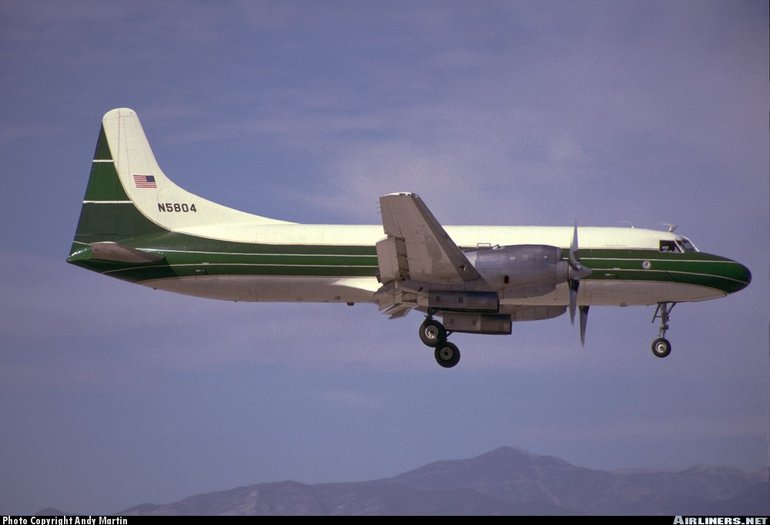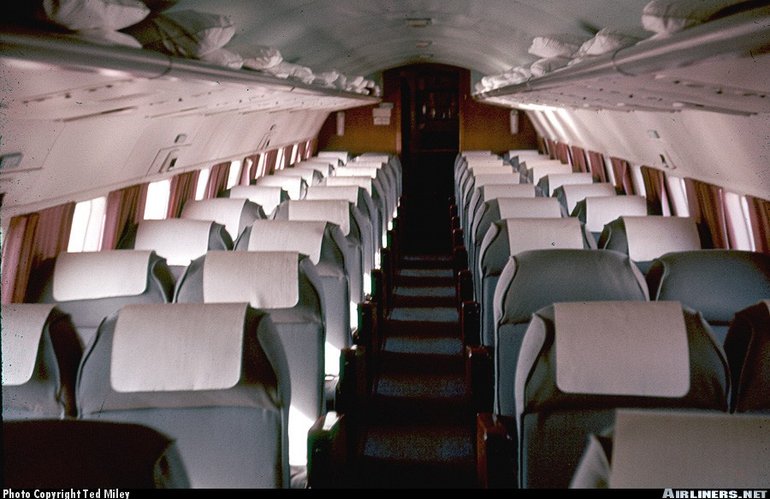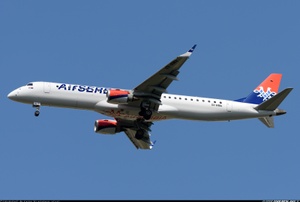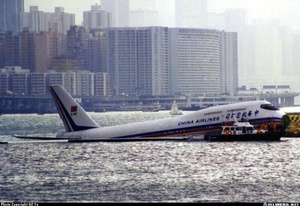Convair 240/340/440/540/580/600/640/5800
Details
Country of Origin
United States of America
Type
Short haul commercial transports
History
The Convair 240, 340 and 440 was one of the closest designs to come near to being a Douglas DC-3 replacement as despite a glut of cheap DC-3s in the postwar years this family of airliners achieved considerable sales success.
Design of the original 110 was initiated in response to an American Airlines request for a DC-3 replacement. American found the 110 (which first flew on July 8 1946) to be too small and asked that the 110 be scaled up in size, and this resulted in the 240 ConvairLiner. The 240 was arguably the most advanced short haul airliner of its day, and first flew on March 16 1947 and entered service on June 1 1948.
The success of the 240 led to the 1.37m (4ft 6in) stretched 340, which first flew on October 5 1951, and the improved 440 Metropolitan which incorporated extra cabin sound-proofing, new rectangular exhaust outlets, tighter engine cowlings, and some other aerodynamic improvements and first flew on October 6 1955. Most of the 440s were also delivered with weather radar in an elongated nose, which had been an option on the 340.
The 240, 340 and 440 sold in large numbers, mainly to airlines in North America, and formed the backbone of many airlines' short to medium haul fleets. Today the small number of piston Convairs that remain in service are mainly used as freighters.
Many of the Convairs were also built for the US Air Force as the C-131 and T-29 in many versions, and for the US Navy as the R4Y which were redesignated too as C-131 in 1962.
However, the original piston Convairs have been the subject of a number of turboprop modification programs, the line's inherent strength and reliability making it a popular choice for conversions.
As early as 1950 the potential of turboprop powered 240s was recognised, leading to the first flight and development of the 240-21 Turboliner, while an Allison 501D powered YC-131C military conversion first flew on June 19 1954. One other early conversion occurred in 1954 when D Napier and Sons in Britain converted 340s with that company's 2280kW (3060hp) Eland N.El.1 turboprops as the 540. Six such aircraft were converted for Allegheny Airlines in the USA, although these aircraft were later converted back to piston power. Canadair meanwhile built 10 new aircraft with Eland engines as the CL-66 for the Royal Canadian Air Force, where they were designated CC-109 Cosmopolitan.
The most popular Convair conversions were those done by PacAero in California for Allison, and this involved converting 340s and 440s to 580s with Allison 501D turboprops, plus modified tail control surfaces and a larger tail area. The first such conversion flew on January 19 1960, although it was not until June 1964 that a converted aircraft entered service.
Convair's own conversion program involved Rolls Royce Darts, and the first of these flew on May 2 1965. Thus converted 240s became 600s, while 340s and 440s became 640s.
Super 580 Aircraft Company, a division of Flight Trails Inc., replaced the Allison 501-D13D engines by -D22Gs and incorporated some further improvements on two or three 580s which were redesignated Super 580.
Kelowna Flightcraft in Canada however has offered the most ambitious Convair conversion program, the 5800, having stretched the 580 by 4.34m (14ft 3in) and reverting to the 440's original tail unit. Production conversions have a new freight door and digital avionics with EFIS.
Most of the remaining Convairs are now used as cargo transports.
Powerplants
240 - Two 1490kW (2000hp) Pratt & Whitney R-2800-CA18 Double Wasp piston radial engines driving three blade constant speed propellers.
340 - Two 1790kW (2400hp) R-2800-CB16 Double Wasps.
440 - Two 1865kW (2500hp) R-2800-CB16 or -CB17 Double Wasps.
580 - Two 2800kW (3750shp) Allison 501-D13H turboprops driving four blade constant speed propellers.
640 - Two 2255kW (3025hp) Rolls Royce R.Da.10/1 Darts.
5800 - Two 3430kW (4600shp) Allison 501-D22Gs.
Performance
240 - Cruising speed 435km/h (235kt). Range with max fuel 2900km (1565nm).
340 - Cruising speed 457km/h (247kt). Typical range with max payload 935km (505nm).
440 - Max cruising speed 483km/h (261kt), economical cruising speed 465km/h (250kt). Service ceiling 24,900ft. Range with max payload 756km (408nm), range with max fuel 3106km (1677nm).
580 - Max cruising speed 550km/h (297kt) at 20,000ft. Range with 2270kg (5000lb) payload 3650km (1970nm), range with max fuel 4773km (2577nm).
640 - Cruising speed 483km/h (260kt). Range with max payload 1979km (1069nm), range with max fuel 3138km (1695nm).
Weights
240 - Empty 12,520kg (27,600lb), max takeoff 18,956kg (41,790lb).
340 - Empty 13,375kg (29,486lb), max takeoff 21,320kg (47,000lb).
440 - Empty 15,110kg (33,314lb), max takeoff 22,544kg (49,700lb).
580 - Operating empty 13,732kg (30,275lb), max takeoff 26,371kg (58,140lb).
640 - Operating empty 13,733kg (30,275lb), max takeoff 25,855kg (57,000lb).
5800 - Operating empty 15,043kg (33,166lb), max takeoff 28,576kg (63,000lb).
Dimensions
240 - Wing span 27.97m (91ft 9in), length 22.76m (74ft 8in), height 8.20m (26ft 11in). Wing area 75.9m2 (817sq ft).
340 - Wing span 32.12m (105ft 4in), length 24.13m (79ft 2in), height 8.58m (28ft 2in). Wing area 85.5m2 (920sq ft).
440 - Same as CV-340 except for length 24.84m (81ft 6in).
580 - Wing span 32.12m (105ft 4in), length 24.84m (81ft 6in), height 8.89m (29ft 2in). Wing area 85.5m2 (920sq ft).
5800 - Same except for length 29.18m (95ft 9in).
Capacity
240 - Flightcrew of two or three. Passenger seating for up to 40, or a 4240kg (9350lb) payload.
340 - Flightcrew of two or three. Passenger seating for up to 52, or a 6075kg (13,391lb) payload.
440 - Flightcrew of two or three. Passenger seating for up to 52, or a 5820kg (12,836lb) payload.
580 - Flightcrew of two or three. Passenger seating for up to 56 at four abreast and 76cm (30in) pitch.
Production
1076 built in total, of which 566 240s (incl 364 T-29s and 26 C-131s), 311 340s (incl 65 C-131s) and 199 440s (incl 21 C-131s). Additionally 10 turboprop 540s were built by Canadair.
170 340s and 440s converted to 580s, 38 240s converted to 600s, 27 340s and 440s converted to 640s. 80 converted Convairs remained in commercial service in late 1998. In addition there have been four 5800 conversions, with a fifth currently under construction.
Related Links
Convair 240/340/440/540/580/600/640/5800
The backbone of this section is from the The
International Directory of Civil Aircraft by Gerard Frawley
and used with permission. To get your own copy of the book
click here.




















